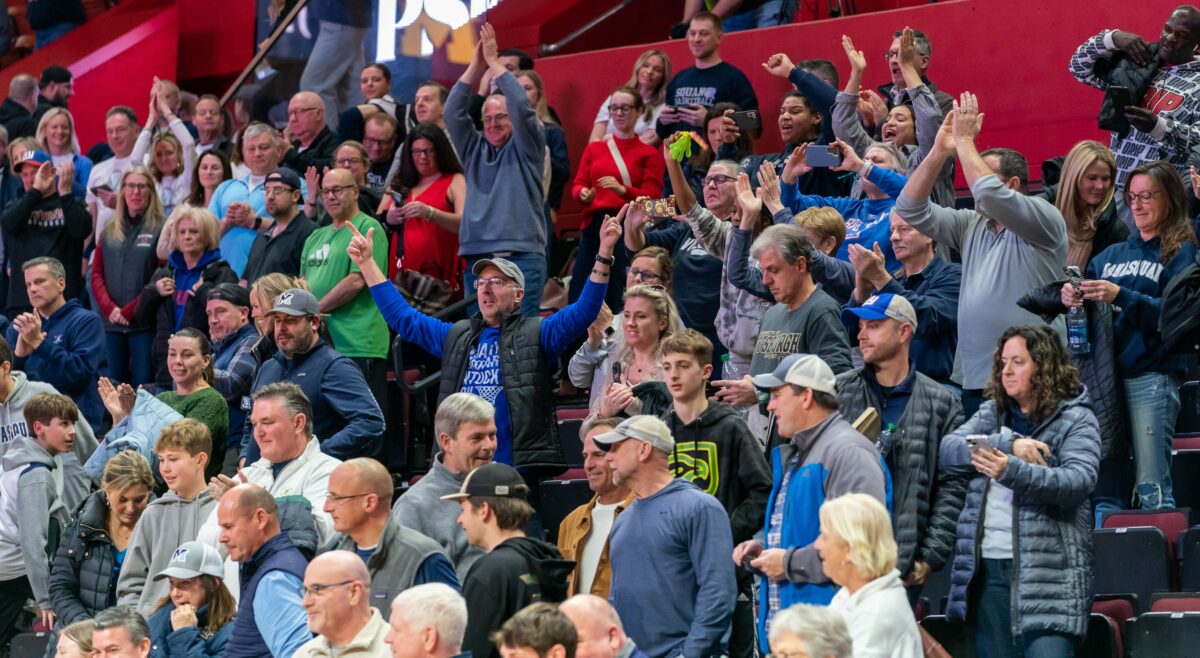The aftermath of the New Jersey high school basketball semifinals game in which Manasquan’s would-have-been game-winning buzzer-beater was overturned and ruled to have been released after the game clock expired was pretty cut-and-dry:
The New Jersey State Interscholastic Athletic Association (NJSIAA) rulebook states that video can’t be used to challenge a referee’s decision. It also prohibits protesting a game’s result due to an official’s call.
Per the rulebook, Camden won despite the NJSIAA publicly acknowledging the call was incorrect and apologizing.
There’s no argument because the rulebook states there can’t be.
But we can certainly ask: Why?
This wasn’t even close. Manasquan got robbed! pic.twitter.com/RUogV8jw8K
— Coach Mike Rice (@CoachMikeRice) March 6, 2024
In the NBA, games can be protested. We’ve seen it multiple times this season alone—for instance, in mid-February, when the New York Knicks lost to the Houston Rockets due to a call officials later stated was incorrect. Or in late February, when the Knicks beat the Detroit Pistons due to a non-call by officials that was later stated to be an incorrect ruling.
Throughout professional sports, we’ve seen rules change in a single offseason following an inarguably disastrous referee decision. Think of the NFL’s short-lived pass interference challenge rule in the wake of the New Orleans Saints vs. Los Angeles Rams playoff game in 2019.
There are also some instances in high school sports where video replay is acceptable. In the California Interscholastic Federation, for instance, video can be used to both call for suspensions and appeal the decisions. In New Jersey just last year, video was likely used in the decision to suspend Camden’s season after a fight broke out during a game. (The difference there, though, is that these videos likely aren’t challenging the decision of an official. It’s making a new decision to affect future outcomes without overturning an existing result. But if video is deemed reliable here, perhaps it can be reliable in other instances).
Video is often widely and immediately available. The Manasquan vs. Camden game was streamed live by NFHS Network. Many other basketball games have fans with phones out and cameras open at nearly all times. Shouldn’t a modern rulebook acknowledge that referees, being human, will make mistakes and that there are times when challenges are necessary?
But it’s not exactly an easy answer—at least, not everywhere. With thousands of high school sporting events every week, reliable video isn’t everywhere. Some sporting events are extremely sparsely attended, and others take place on a field that might not allow for tight enough camera work from a phone (think of a soccer pitch, for instance).
Adding the necessity of video adds another element that would pose additional disadvantages to athletic departments from poor zip codes, ones that may already struggle to provide basic amenities for a sports program. Then, regardless of zip code, ensuring enough video angles to make the correct decision would be nearly impossible. In NBA and NFL games, fans have access to pretty much any angle, slow motion, freeze-frame, and zoom-in capabilities. A couple of phones can’t do that.
Plus, anecdotally, it would be a logistical nightmare. There are lots of calls made by amateur referees that could be challenged on a night-to-night basis. Game pauses would be more brutal than in the pros. And with high schools already suffering from referee shortages around the nation in large part due to abuse from parents and coaches, it doesn’t seem like a sound idea to set the groundwork for phones to be shoved in officials’ faces. (Let alone coaching shortages, with some parents seeming to feel increasingly entitled to berate them).
With that said, there’s probably a middle ground. Challenging individual calls during a high school basketball game would be a logistical nightmare, but there are ways to make exceptions in extreme moments. For instance, when there is video evidence readily available for a call that could decide a championship?
It’s time to enter the 21st century.
